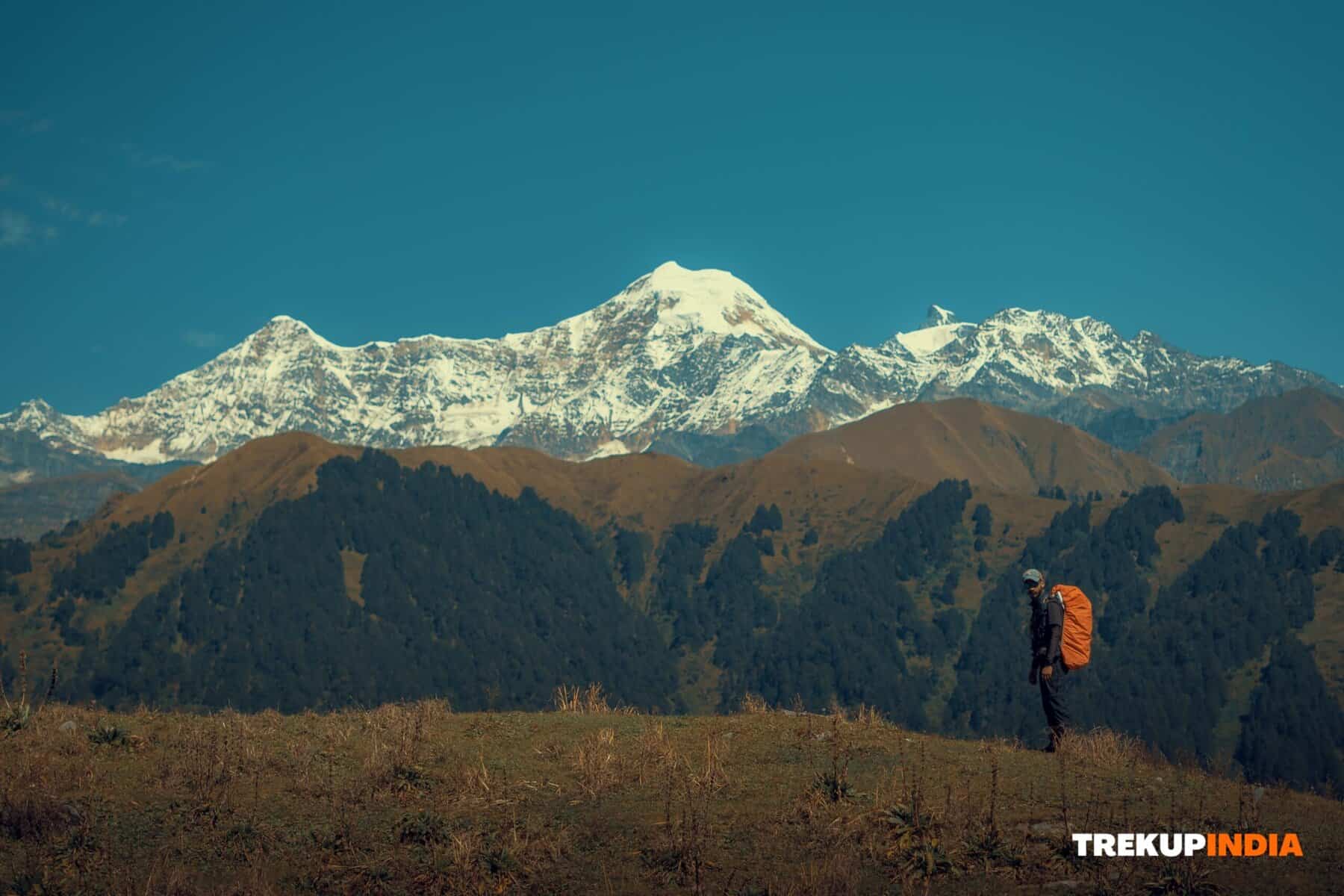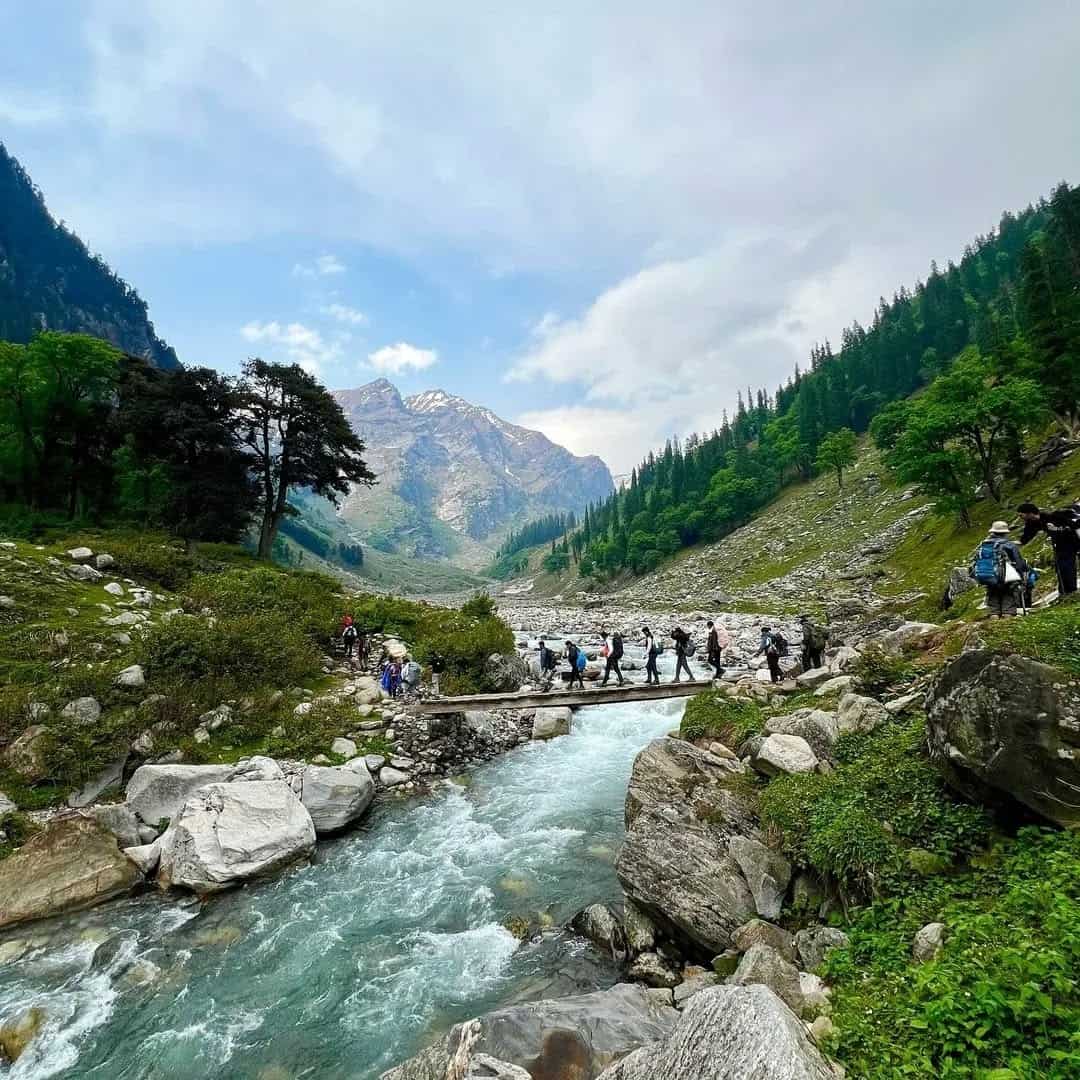Nilgiris Green Lake Trek
Nilgiris Green Lake Trek
The trek to Nilgiris Green Lake is a breathtaking journey that culminates in a picturesque, captivating lake. The trail is a delight, but the lake’s beauty is enchanting. Surrounded by lush grassy knolls, the unspoiled lake is a tranquil oasis, save for the occasional fisherman. The experience of sitting on the grassy mounds and gazing out at the lake’s gentle ripples is nothing short of blissful.
Nilgiris Green Lake Trek Detailed Trail Information
Day 1: Hindustan Photo Films (HPF) To Nilgiris Green Lake & Return
Follow the road that leads to the X-ray plant, and in less than a minute, you’ll reach a curved shoulder on the right side of the road that leads to the plant. Look out for a small clearing on your left, accessed via a trail designed for cows. Join the trail and make your way up to the clearing, surrounded by the refreshing scent of eucalyptus. The clearing gradually ascends into a picturesque meadow, where you’ll find the last of the greens of the Ooty Golf Course on your right. Cross the field, keeping the golf course to your right, and head towards the hill while enjoying the fragrant eucalyptus grove around you. As you enter the meadow, stick to your left.
Descend carefully to the left, following the trail as it winds through a dense thicket of thorny bushes with bright yellow blooms. After a brief, scenic walk, the path opens onto a well-maintained road that traces the edge of the picturesque Green Lake. Majestic trees tower above, creating a stunning natural work of art. Be sure to take note of the unique tree with a large hollow in its trunk. At the T-junction, turn left and continue along the road for 3-4 minutes until you reach a breathtaking viewpoint overlooking the lake. Take a moment to appreciate the tranquillity and vastness of this natural wonder.
As the road straightens after a bend, look for a wide dirt path that branches off to the right. This dirt path curves around a hill, leading to another spot where you can enjoy a lake view. You will encounter more frequent and picturesque lake views from this point onwards. Take a moment to descend to the lakeside and appreciate the uplifting scenery. Forests on all sides surround the lake, and above, you’ll see cloudy blue skies. The trail eventually enters a forest, covering the ground with colourful leaves, creating a soft trail similar to a comfortable bed. With every step, your shoes will pleasantly sink into the cushioning of the leaves. Along the way, you will encounter numerous fallen dry pine cones showcasing nature’s artistic handiwork. As you continue, the trail meanders around the bends of the lake, occasionally meeting fishermen eagerly waiting for a catch. Take some time to engage in conversation with them.
In just a few minutes, you’ll arrive at a breathtaking viewpoint that offers the most magnificent view of the lake yet. The surrounding forests stretch out and blend seamlessly into the water, creating a picturesque scene framed by lush greenery. The lake’s gentle ripples emanate a sense of eternal tranquillity, adding to the peaceful ambience. As you journey, you’ll notice a change in the forest floor, transitioning from vibrant leaves to dry, brown pine needles that provide a softer terrain underfoot. Look up, and you’ll see the towering pine trees watching over you, their branches stretching out like protective arms, enveloping you in the warm embrace of nature.
Follow the brown-toned path for ten minutes until you reach another vantage point. A large fallen tree trunk is positioned towards the lake at the riverbank. Inside the forest, there are rocks where you can take a break. Observe that the forest is gradually transitioning from shola to an increasing abundance of pine trees surrounding you. You can spot rare trees and even a few deer by staying quiet. Shortly after passing these rocks, in about five minutes, you will encounter a small stream that must be crossed.
There are small rocks that can assist you with this. It is important to note that the water is not suitable for drinking. The trail then reenters a forest filled with slender, tall pine trees. Eventually, the forest gives way to thorny bushes once again. After 20 minutes, the trail opens up along the lake’s edge. Be cautious, as this area may be muddy. Before long, you will notice a skinny tree that has fallen and extends into the lake. It is situated next to a beautiful shaded clearing. Look for a pump house on the opposite side of the lake to ensure you are headed in the right direction. The pump house is located diagonally across from where you are, on the other side of the lake.
This location offers a picturesque setting for a meal, surrounded by a tranquil forest and a stunning lake view. While the area’s natural beauty is sure to impress, the shade and stillness can make the temperature drop, so bringing a light jacket is a good idea. Don’t let the possibility of rain deter you—the forest provides ample cover, ensuring a comfortable and peaceful dining experience.
After lunch, continue your journey along the trail as it winds around the lake. Shortly after, you’ll encounter a narrow section of the lake that juts into the forest. Make your way to the tip of this section, and then turn perpendicular to the lake to enter the forest, following the path indicated on your map. Your goal is to cut through the forest and reach the opposite end of the lake. Mark a route that takes you up into the pine forest, avoiding any turns to the left or right. Instead, aim straight ahead, climbing gently up the ridge. From the top, the slope gradually slopes down towards the lake, which may not be visible from this vantage point. As you round the top of the ridge, you’ll encounter a clear trail that cuts through the forest and leads to the left.
The path frequently intersects with other trails, but it’s easy to stay on track by following the leftward direction. This will lead you to a charming grassy bank on the lake’s shore. The brief traverse across the lake takes no more than 15-20 minutes and offers a fresh perspective. The opposite side of the lake boasts a picturesque view of rolling meadows, scattered farmland, and pine forests climbing up the hills.
The lakefront view from your side is equally stunning, with the dark woods creating a dramatic backdrop for the trail as it weaves through the meadows. The trail continues to follow the lake’s edge, curving around a comprehensive, bow-shaped path. The pine forests that overlook the lake are striking, especially where they abruptly end at the grassy knolls just 20 feet from the shore. A surprise awaits you around a sharp bend as you continue on the trail. To your left, a narrow clearing, skirted by Shola trees, climbs up into the hills. The almost meadow-like clearing is a delight, with the low-floored Shola trees casting a dark shadow against the golden grass. The contrast is hypnotic.
This is where you depart from the lake and ascend to the open space. Pause briefly to glance back and capture one final sight of the vibrant green lake. The perspectives around the bends are superb. As you look forward, maintain your course between the two electric lines that run alongside the open space. The meadows undulate in a succession of small hills. The shola trees that enclose the fields possess an enigmatic quality. Their depths are shadowy and impenetrable.
As you venture forth, the path meanders through a series of small, picturesque meadows atop rolling hillocks. While the trail does feature some ups and downs, it generally follows a gradual ascent. Occasionally, it would be best to momentarily veer into the underbrush between two hillocks to continue your climb. Be mindful of small streams that may crisscross your path, as they are unsuitable for drinking. The atmosphere is often shrouded in mist and fog, adding an air of mystery to the already breathtaking scenery. Enjoy the roughly hour-long trek to the end of the clearing, keeping an eye on the electric lines that parallel your route. A fence marks the end of the clearing, signalling the conclusion of this tranquil journey.
At a certain point, the electric lines divide, with one branch extending to the right (Option A) and another heading to the left (Option B – please scroll down for more information on this option).
Choice 1: Follow the electric line on your right side. It continues in a straight direction. The path becomes more interesting as you gradually descend into a diverse forest with vibrant colours. The foliage bursts with orange, brown, and various shades of green. The undergrowth is sometimes only a few feet tall. Beneath the dense canopy, the trail winds through moist soil and leaves. Keep descending as the trail weaves in and out of the forest. After thirty minutes, you will reach a cluster of tall, deep, dark shola and pine trees. Unexpectedly, the trail abruptly ends at a gate, which may surprise you. Cross the gate, and you will emerge at a farm overlooking a valley. This charming farm settlement, consisting of three or four houses and a church, is the first human settlement you encounter on the trek. The farms are beautiful, with their lush greenery contrasting against the red soil. Although the trek officially ends here, the actual end of the trek is a bit further ahead.
After exiting the village, traverse another gate that marks the community’s boundary. Beyond the settlement, meadows stretch out, and a dirt path leads away from the town. Follow the dirt path as it crosses an underground stream and ascends quickly to level out among a eucalyptus grove. The trail runs alongside the grove for ten minutes until it merges onto a paved road. This is where buses to Ooty operate twice daily, departing at 1:00 and 5:00 pm. If you haven’t arranged for a vehicle, turn left onto the road and continue walking. After a kilometre, the road passes by one of Ooty’s garbage dumping sites. As you continue, the road winds through small settlements, and human activity increases gradually. Eventually, the road converges with another road at a fork. Proceeding further will lead you to a bus stand and the option of an auto-rickshaw. To reach Ooty, take the Governor’s Shola road, passing the Ooty Lake, a distance of around 5-6 km.
Choice 2: If you trace the course of the electrical wires to the left, you will come across a barrier. On the other side of the fence are feral shrubs embellished with yellow blossoms, extending upwards on a sloping landscape. It would help if you browsed through this landscape.
After passing through the bushes, preserve a leftward trajectory. After a five-minute walk, look back and take in the breathtaking panorama of yellow flowers and evergreens. It’s a charming scene! Quickly after, you’ll come across another fence. Upon crossing it, you’ll find yourself in an attractive farm landscape. Regional farmers cultivate potatoes, radishes, and onions using a step-farming method. Remember the sown land and prevent treading, which might harm the crops. A distinct course goes through the middle area, assisting you through the farm.
To ensure a safe and orderly walk, please enter a single line towards the opposite side of the farm as the course is narrow. When you reach the opposite, go into a stunning meadow where you might identify cows quietly grazing. The extensive forest lies ahead and to your right, using a fascinating view that might lure you to desert city life and settle in the stunning hillside. Take a minute to rest and appreciate the surroundings. From the meadow, make a left turn at the forest’s edge. Here, the trail broadens and offers sufficient area for strolling. Towering trees surround you on your left, while a little stream covered in moss flows on your right. Right in the centre of this stream stands a singular evergreen, high and happy. On the opposite end of the stream, another forest emerges. Prepare to find a little cement bridge crossing over the stream now. Make sure to cross the bridge to continue your journey.
Continue marching till you reach the border of the forest and turn left. This specific trail area is the most lovely part of the walking. It is embellished with a marvellous golden evergreen that supplies a beautiful shade to the course. On the ideal side, little bushes are growing. After a simple 10 minutes, this excellent trail concerns an end. Take your time strolling sluggishly and value the appeal surrounding you. Around 2 minutes into this section, you will again spot the lake on your left. Soon after, you will return to where you initially glimpsed the lake, which was identified by a concrete roadway. Take the best turn and backtrack your actions. To return to the HPF track, you must go through thorny bushes, browse over a big fallen tree, pass through the meadows while keeping to the left, and make a left turn. If you have a lorry, you can drive to Kokkal, continuing in the same direction as you were in the day. Kokkal is a little village about an hour and a half away from HPF. Having supper at a little restaurant there would be an excellent concept. The fields in the town provide a perfect area for establishing your camp. Nevertheless, it is necessary to get approval from the village head before proceeding with this strategy.
2nd Day: Treking from Kokkal to Bokkapura
In the daytime, Kokkal resembles a dream. Charming houses are in harmony, nestled in lavish farmlands. Blooming flowers can be found abundantly on shrubs. Taking a deep breath will fill your lungs with fresh oxygen. Many visitors to this village think about making it their irreversible home. Once you refurbish, start your journey. It will be warmer today compared to yesterday. Make your way to the Kokkal bus stop. From there, follow a paved course until you discover the Ayyanar Kovil (temple) on your left. The trail starts to ascend from this point. This location of the village is referred to as Doobakandi, which is an extension of Kokkal. Quickly, you will pass the last of the settlements on your left. It’s essential to remember that you will be surrounded by dynamic green tea plantations for a considerable part of the trail. After some time, the trail will come down quickly with a series of switchbacks, ultimately leading into a dense deciduous forest. The plant life is thick, and the trail might occasionally perspire.
The trail becomes covered in layers of fallen leaves throughout spring and fall. The protective forest shades the trail throughout the remainder of the year. Descending rapidly, the trail unexpectedly reaches a stream in the mountain’s fold. Crossing the stream is a cement bridge. This whole area, hidden beneath towering trees, is perfect for a break. The water here is both tidy and refreshing. Continuing along the trail, it emerges on the opposite side of the valley. It wouldn’t be uncommon to encounter elephant faeces along the course, as elephants prosper in this area. It is a good idea to stay alert for the possibility of meeting wild elephants on the trail or the slopes above. The trail gradually advances towards the open edge of the valley, passing through the Bokkapura village. Following this broad traverse, the trail descends quickly in a series of switchbacks, leading into a dark bamboo forest. The bamboo stalks sway in the wind, developing an eerie creaking noise.
Amid the bamboo forest, a second stream intersects with the trail, providing an essential water source for the neighbouring Bokkapura village. Nevertheless, this stream may dry throughout the summer, highlighting the region’s seasonal fluctuations. The trail proceeds to the edge of the bamboo forest, where it suddenly emerges into the light, exposing the village of Bokappura and the surrounding civilization. Along the dirt track leading up to the trail, numerous resorts accommodate visitors seeking to experience the appeal of the surrounding landscape. Bokkapura’s temple deity is renowned, drawing in followers from afar, and a small bus stop offers hourly connections to Masanagudi, the following considerable settlement. The roadway to Masanagudi goes through the Mudumalai forest reserve, supplying a glimpse into the area’s abundant biodiversity. From Masanagudi, it is easy to reach Theppakadu, the elephant camp located within the Mudumalai forest reserve, by bus. Theppakadu’s distance to the Ooty-Mysore highway (NH67) makes it easily accessible, with regular buses connecting to Mysore. The journey from Masanagudi to Bangalore takes roughly 6 hours, using a practical conclusion to an unforgettable expedition.
How to Reach For Nilgiris Green Lake Trek
Upon exiting the primary gate of Ooty Railway Station, a bus stop can be discovered on the left-hand side. Buses arrive and leave every 15 minutes, carrying passengers to different locations outside Ooty. Take a bus from here to reach Hindustan Photo Films, situated 6 km away on the Mysore roadway.
Want To Trek Like Pro?
Check out the following videos if you want to trek like a pro trekker and improve your skills. These videos contain helpful tips, tricks, and techniques to help you trek like a pro. Whether you’re a beginner or an experienced trekker, these videos can provide valuable insights to enhance your trekking experience. So, watch the videos below by Trekup India experts to take your trekking skills to the next level.







Know Everything About Acute Mountain Sickness
Acute Mountain Sickness is a medical condition that can occur when individuals travel to high altitudes, typically above 8,000 feet. It is caused by the decrease in air pressure and oxygen levels in the air as altitude increases. Symptoms of Acute Mountain Sickness may include headache, nausea, vomiting, dizziness, and difficulty sleeping. To avoid Acute Mountain Sickness, it is important to gradually adjust to high altitudes and seek medical attention if symptoms worsen. To learn more about this condition, check out the videos by Trekup India.









